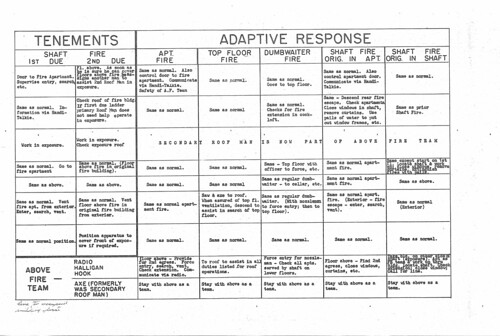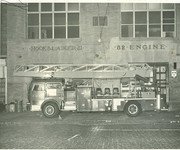Some additional background on where the Adaptive Response program fit in: As the late 1960s progressed, FDNY was faced with a skyrocketing alarm rate as mentioned above. Department tried a lot of different things: eliminat response of 3rd engine; form 2nd sections for several busy companies (E 41-2, E 50-2, E 88-2, E 91-2, E 217-2, E 225-2, E 233-2, L 17-2, L 26-2, Bn 3-2, Bn 12-2, Bn 14-2, Bn 18-2, Bn 37-2, Bn 39-2, Bn 44-2); form some new companies, new battalions, new division (e.g. - E 85, L 59, L 174, L 175, L 176, Bn 55, Bn 56, Bn 57, Bn 58, Bn 59, Bn 60, Div 17); form tactical control units (TCU 512, TCU 513, TCU 531, TCU 712, TCU 731, TCU 732); institute Adaptive Response in conjunction with TCUs; interchange program (busy companies with less busy companies); discretionary response boxes (DRBs); and the new ERS alarm box system and response program.
All these programs obviously did not happen at the same time, but most of these changes and programs took place between 1966 and 1975. I think Adaptive Response was 1970 - right in the middle. There are many members of this site who can explain these programs much better than I could. I also admit that my list is probably incomplete. There was also the Salvage Corps, the Fire Patrol still operating, the Superpumper System, the arson Red Hat program, "temporary" firehouses ( the Tin Houses), rapid water, and most important - the advent of the tower ladder.
I just wanted to put some of this stuff together and take a minute to remember what it was like to have either the first or second section of the same company or battalion, or an interchanged company, or a TCU respond to the same box depending upon the time of day or which unit was available. No computer print outs or tickets. You could hear chiefs and aides asking the "2nd due engine or truck" to do something not knowing who they had at a fire. Some of the above programs were ineffective or even counter-productive (e.g. - the Interchange Program). Most FFs still did not have handie-talkies or radioes. The addition of new companies during these years were quickly followed by units being disbanded, firehouses being closed, layoffs and other reductions when the city ran out of money.
But the guys who rode on the back steps back then and fought fire after fire with rubber coats and no masks were the most remarkable memory of this remarkable FDNY era.
Thanks to Lucky for corrections.







